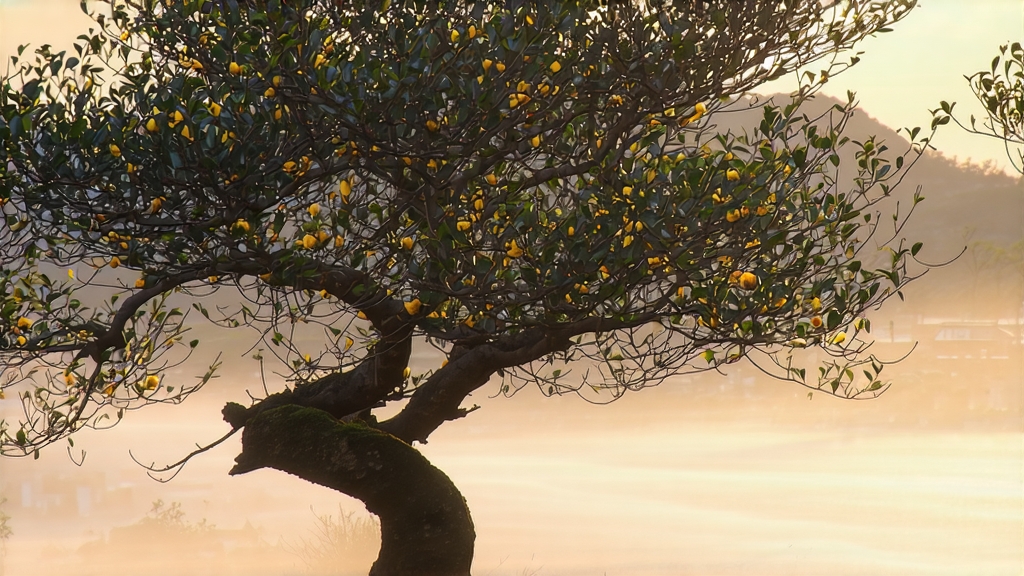
Tucked high above the Sichuan basin, where perpetual cloud veils the Min River gorge, lies Meng Ding Mountain, the cradle of the world’s oldest cultivated tea garden. It was here, in the mist-cooled terraces of Ganlu Temple, that Buddhist monks first coaxed the pale-gold liquor now known as Meng Ding Huang Ya—Meng Ding Yellow Bud—during the Tang dynasty (618-907 CE). For twelve centuries this leaf was carried in bamboo tubes down narrow plank roads to Chang’an, where emperors paid its weight in silver to secure the first spring picking for the imperial altar. Foreign caravans tasted it only when tribute quotas were exceeded; the rest vanished into palace storehouses, its fragrance surviving more in poetry than in memory. Today, fewer than 3 000 kg of authentic Meng Ding Huang Ya reach the market each year, making it rarer than silver-tipped pu-erh and, for many connoisseurs, the quietest legend in Chinese tea.
Although yellow tea is officially grouped into three regional families—Huang Ya (yellow bud), Huang Xiao (yellow small leaf), and Huang Da (yellow large leaf)—Meng Ding Huang Ya stands apart as the only bud-centric style grown above 1 000 m on Pre-Cambrian granite soils. The cultivar is a local variant of Camellia sinensis var. sinensis nicknamed “Ganlu Zao” (Sweet Dew Clone) whose leaves accumulate more theanine than any other Sichuan bush, thanks to 180 foggy days a year and a 15 °C diurnal temperature swing. Because the buds are picked only between Qingming and Grain Rain—usually a ten-day window—each kilo requires 42 000 tender tips plucked at dawn while still turgid with overnight dew.
The craft that converts these jade-green buds into golden needles is called “sealed yellowing” (men huang), a slow oxidation dance that sits stylistically between green and oolong. Within two hours of plucking, the buds are wok-fired at 160 °C for exactly 90 seconds, hot enough to kill the leaf’s green enzymes yet gentle enough to keep moisture above 55 %. While still warm, they are wrapped in thin cotton pouches and left to suffocate for 40 minutes; the trapped humidity turns the chlorophyll into pheophytin, edging the leaf colour from jade to ivory. This cycle—fire, wrap, rest—is repeated three times, each repetition lowering the temperature by 10 °C and lengthening the rest by 20 minutes, a choreography that demands the master read the leaf’s aroma like a musical score. A final low-temperature bake at 60 °C for two hours sets the yellow pigment and locks in a chestnut-sweet precursor that will later bloom in the cup.
Western drinkers often confuse this process with fermentation, but no microbial agent is involved; instead, the leaf undergoes non-enzymatic browning akin to the Maillard reaction in artisan bread. The result is a liquor that retains the freshness of green tea while acquiring the mellow roundness of lightly aged white—an alchemy impossible to replicate outside Meng Ding’s microclimate. Attempts in Zhejiang and Hunan yield dull olive leaves because the nightly mountain mist on Meng Ding acts as a natural humidifier, allowing the yellowing to proceed evenly without mould.
To brew Meng Ding Huang Ya, think of it as a shy noble: it reveals itself only when courted with cool water and patience. Use 3 g of leaf for every 120 ml of glass or porcelain; tall, cylindrical vessels showcase the “three ups and three downs” dance of the standing buds. Water should be mountain-spring soft, taken off the boil at 80 °C; hotter temperatures scorch the amino acids and flatten the signature orchid note. After a five-second rinse to awaken the leaf, infuse 25 seconds, adding five seconds for each subsequent steep. A gaiwan may be used, but leave the lid ajar; the leaf likes to breathe. Six infusions are common, the third usually the most aromatic, the fifth the sweetest, with a lingering aftertaste of steamed edamame and honeydew.
Evaluation follows a four-dimensional grid taught to me by Master Zuo of Ganlu Temple: colour, aroma, body, and living energy (huo qi). Tilt the glass against white porcelain: the liquor should glow like pale chardonnay, never chartreuse. Inhale deeply; top notes are magnolia and fresh chestnut, under